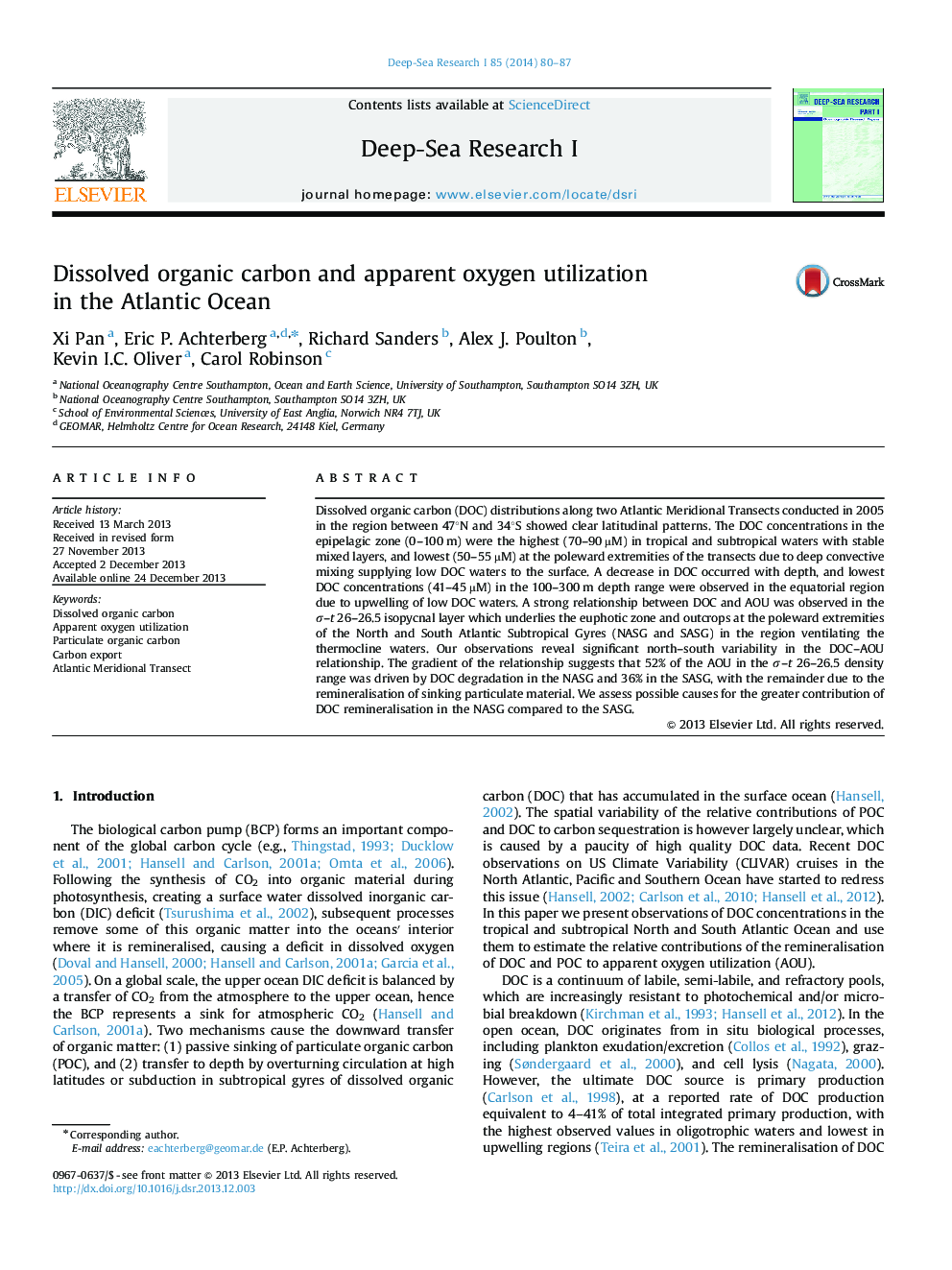| کد مقاله | کد نشریه | سال انتشار | مقاله انگلیسی | نسخه تمام متن |
|---|---|---|---|---|
| 4534553 | 1626345 | 2014 | 8 صفحه PDF | دانلود رایگان |
• Meridional pattern in surface DOC in Atlantic Ocean.
• POC mineralization determines AOU in equatorial Atlantic.
• DOC utilization determines AOU in Atlantic subtropical gyres.
Dissolved organic carbon (DOC) distributions along two Atlantic Meridional Transects conducted in 2005 in the region between 47°N and 34°S showed clear latitudinal patterns. The DOC concentrations in the epipelagic zone (0–100 m) were the highest (70–90 µM) in tropical and subtropical waters with stable mixed layers, and lowest (50–55 µM) at the poleward extremities of the transects due to deep convective mixing supplying low DOC waters to the surface. A decrease in DOC occurred with depth, and lowest DOC concentrations (41–45 µM) in the 100–300 m depth range were observed in the equatorial region due to upwelling of low DOC waters. A strong relationship between DOC and AOU was observed in the σ–t 26–26.5 isopycnal layer which underlies the euphotic zone and outcrops at the poleward extremities of the North and South Atlantic Subtropical Gyres (NASG and SASG) in the region ventilating the thermocline waters. Our observations reveal significant north–south variability in the DOC–AOU relationship. The gradient of the relationship suggests that 52% of the AOU in the σ–t 26–26.5 density range was driven by DOC degradation in the NASG and 36% in the SASG, with the remainder due to the remineralisation of sinking particulate material. We assess possible causes for the greater contribution of DOC remineralisation in the NASG compared to the SASG.
Journal: Deep Sea Research Part I: Oceanographic Research Papers - Volume 85, March 2014, Pages 80–87
